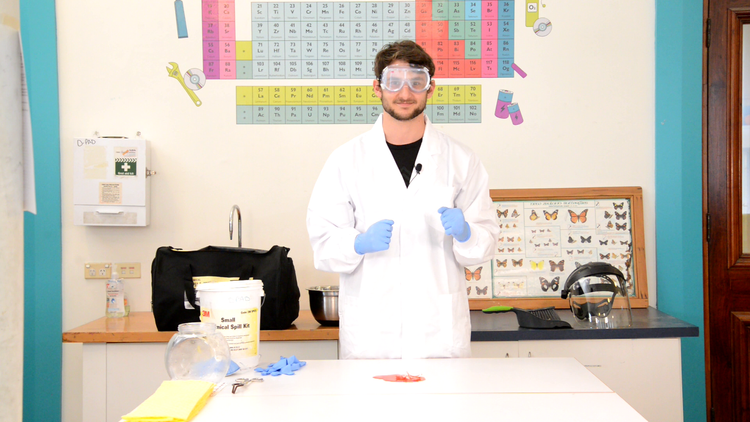Understanding PPE
Personal protective equipment is used when you are working in an environment where there is a potential hazard, and you may be harmed.
PPE protects you from harm and your clothes from becoming damaged or contaminated.
The harm may occur instantly if you are working with a heat source, or if you are dealing with battery acid, in the form of a heat burn or chemical burn.
The harm may be insidious – you may breathe in some asbestos fibres that years later lead to you developing mesothelioma.
We are all too familiar with wearing masks as part of COVID-19 protocols. Masks are PPE in that they reduce your chances of becoming infected. You would use a mask, as well as other PPE, when dealing with the potentially infectious dead animals that are often brought into our institutions.
 The correct PPE for the job
The correct PPE for the job
The type and amount of PPE you will have to wear will depend on the job that you are doing. If you are dealing with asbestos, you will need a P2 or N95 mask. These stop 94% of fibres being breathed in. A more expensive P3 breathing apparatus will stop 99.9% of fibres.
P2 and N95 masks are virtually identical – the N95s comply with USA standards, whilst P2s comply with the European and Australian standards.
When dealing with asbestos, you will also require disposable overalls (with hood), disposable over-shoes, and disposable gloves. When you have completed your work with asbestos, remember to treat your discarded disposable PPE as asbestos waste and ensure it is properly bagged and disposed of correctly.
If you are dealing with liquid chemicals, such as ethanol, formalin, or corrosives, it is best to use a lab coat, disposable nitrile gloves, safety goggles, or face shield and ensure that your footwear completely covers your feet.
Ensure that your hair is tied back and that your sleeves are tucked into your gloves. This is to stop your sleeves dipping into the liquid. Ensure that you have removed any jewellery, such as rings with sharp edges, as these may split the disposable gloves. When dealing with liquid chemicals, you only require a mask in exceptional circumstances.
After you have completed your work with the chemical liquid, you only need to dispose of your gloves. The remainder of your PPE you can re-use.
If you are dealing with a biological hazard, such as a dead animal or a mould infestation, it is best to use a lab coat, disposable nitrile gloves, safety goggles or face shield, and a P2/N95 mask.
If you wish to learn how to put on and take off PPE, you can watch our chemical spill video.

